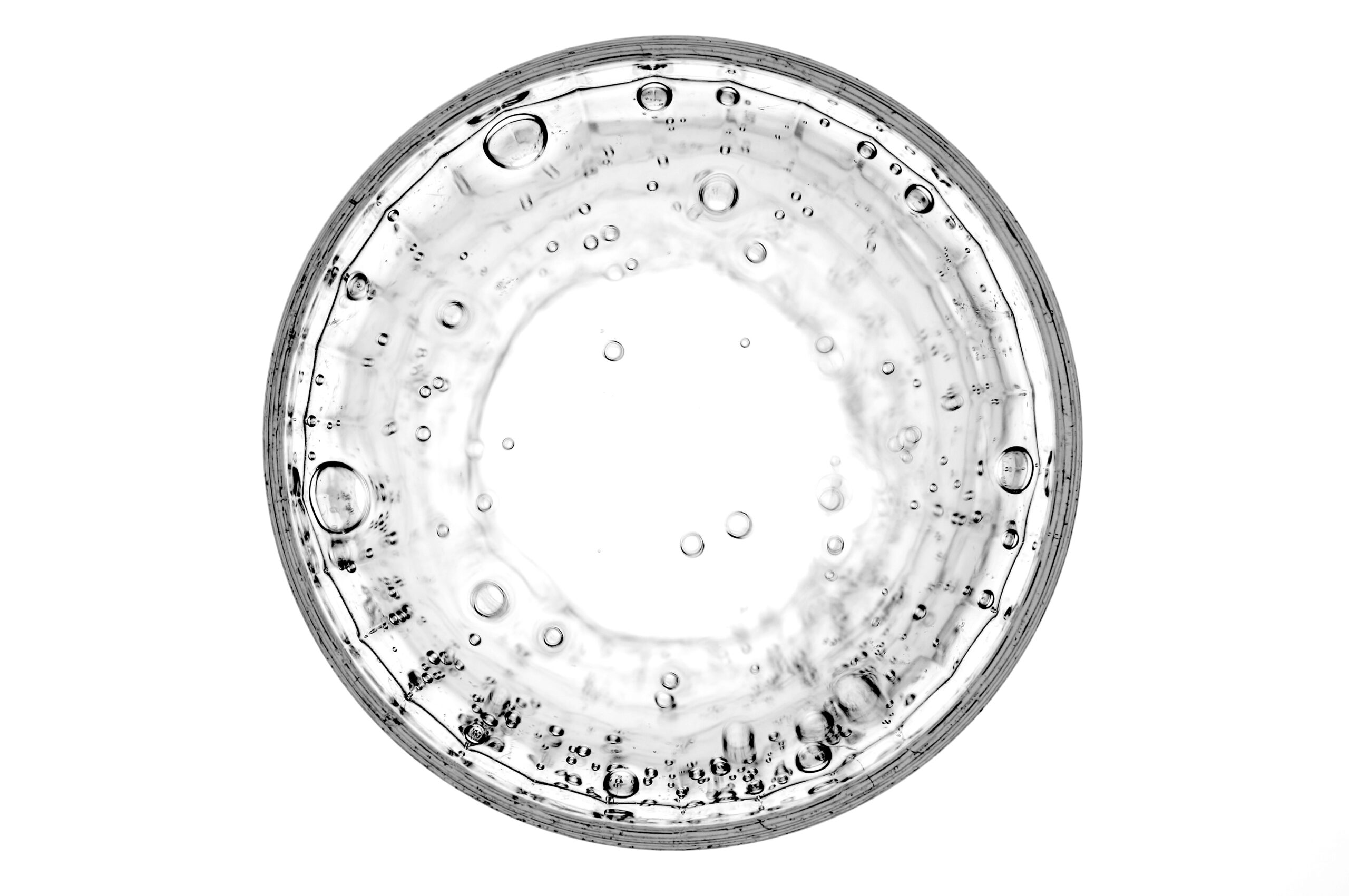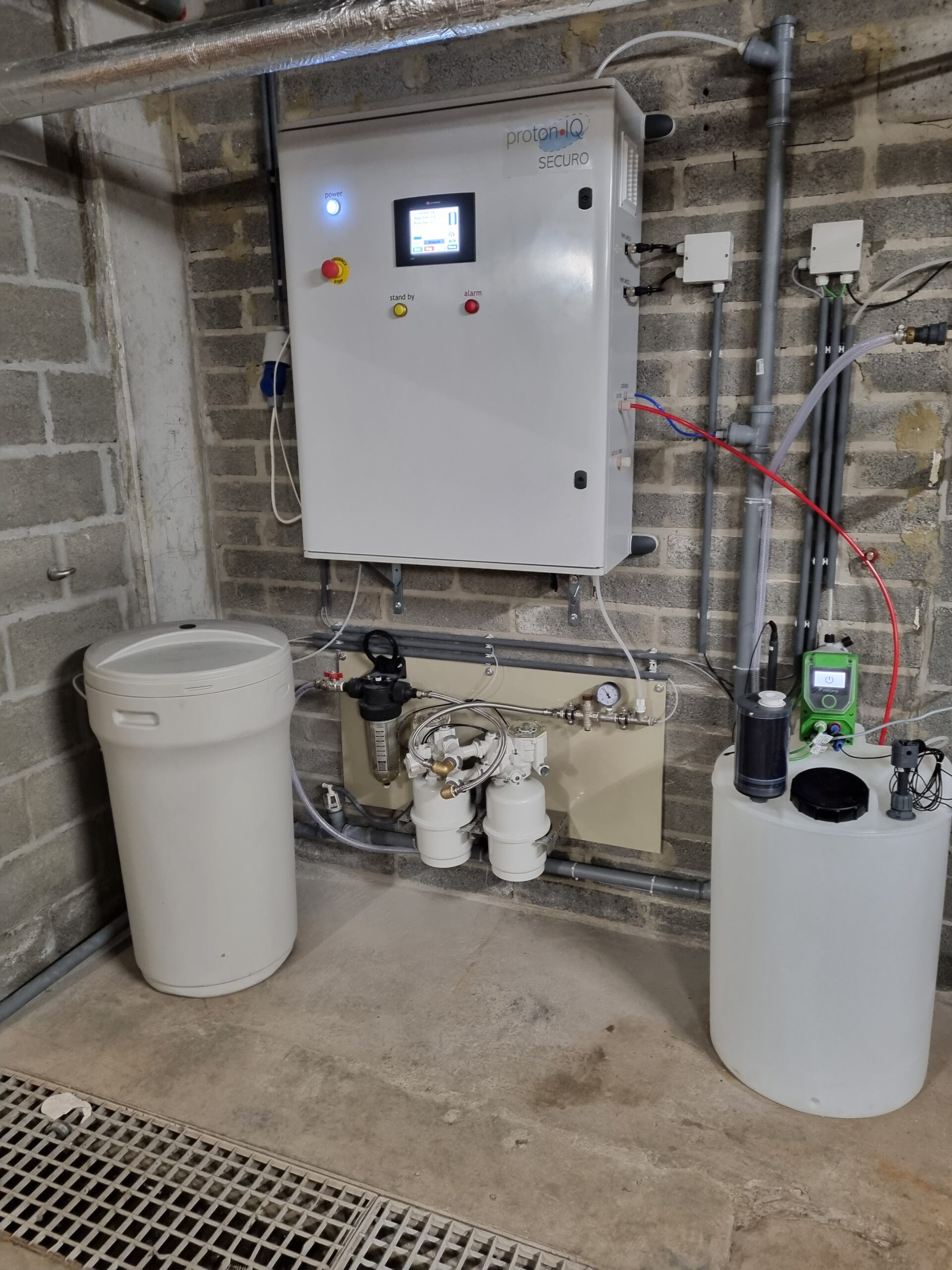Address
Vision Green Solutions GmbH
Am Mittleren Moos 48
86167 Augsburg
Business hours
Mo - Fr: 07 - 19 Uhr

Water treatment is a critical aspect of ensuring access to clean and safe water. Two primary approaches dominate the field: decentralized and centralized water treatment systems. In this exploration, we'll unravel the pros and cons of each, shedding light on their impacts and efficiency. Additionally, we'll delve into the revolutionary decentralized solution, proton-IQ® SECURO, emphasizing the independence it offers.
Why water and the access to water is so important, you can read up on here.

Centralized water treatment is a comprehensive process of purifying water at a central facility, typically a treatment plant. The aim is to eliminate contaminants and impurities, ensuring that the water supplied to communities is safe for consumption and various other purposes.
In this approach, water, often sourced from rivers, lakes, or underground reservoirs, undergoes rigorous treatment processes at a large-scale facility, which is equipped with advanced technologies and a trained workforce. The treatment plant is strategically located to serve a specific region or a network of communities. The treated water is then distributed through an extensive network of pipes and infrastructure to reach end-users.
Centralized water treatment plays a pivotal role in global water management. As of recent statistics, approximately 70-80% of the world's population receives their drinking water from centralized treatment facilities. These facilities vary in size, ranging from small community-based plants to massive metropolitan treatment centers. The centralized model has been a cornerstone in achieving significant strides in providing access to clean and safe drinking water on a global scale.
While these statistics underscore the effectiveness of centralized water treatment in delivering safe water to a vast majority, ongoing challenges persist, such as the vulnerability of centralized systems to disruptions and the associated environmental impacts of extensive distribution networks. These challenges are prompting a reevaluation of water treatment approaches, leading to the exploration of decentralized solutions that offer resilience, efficiency, and a more localized impact.

Decentralized water treatment represents a paradigm shift in water management, bringing water treatment closer to the source of consumption. Unlike centralized systems that rely on large treatment plants, decentralized approaches emphasize on-site or local treatment solutions. These systems cater to specific needs, offering tailored water treatment solutions for communities, industries, and remote locations.
Decentralized water treatment methods encompass various technologies, including point-of-use systems, on-site generators, and modular treatment units. The flexibility and adaptability of these systems make them particularly advantageous for diverse applications.
Obwohl die Einbindung dezentraler Systeme zunimmt, sind keine vertrauensvollen Statistiken über die Quantität der Anwendung bekannt. Die Zunahme ist dennoch damit zu begründen, dass die Limitierungen der zentralen Wasseraufbereitung abgelegene Orte erreichen und spezifische Wasserqualitätsansprüche einzuhalten immer mehr erkannt werden. Außerdem spielt die dezentrale Wasseraufbereitung eine wichtige Rolle im Aufbau von Widerstandsfähigkeit in Hinsicht auf die Klimakatastrophe.
Regions with limited access to centralized infrastructure, such as rural communities and developing areas, are witnessing a significant shift towards decentralized solutions. The scalability of these systems allows for effective water treatment in both small-scale applications, like individual households, and larger-scale implementations, such as industrial complexes or small municipalities.
Der Trend zur dezentralen Lösung fügt sich in die wachsende Aufmerksamkeit für lokale Wasser Sicherheit und die Notwendigkeit von nachhaltigen, Gemeinschaft-spezifischen Lösungen ein. Da die Technologien immer besser werden und auch der Zugang zu ihnen einfacher, wird der dezentralen Wasseraufbereitung eine immer wachsende Rolle im Gewährleisten von sauberem und sicherem Wasser für alle zugewiesen.

Centralised water treatment facilities process vast quantities of water daily. They offer the economies of scale, therefore operating costs are often lower in regards to the volume of water treated than small decentralised water treatment approaches. Their widespread implementation contributes significantly to providing clean drinking water to millions globally, centralisind expertise and advanced technology.
Although these large systems are not often faulty, when they are it brings a lot of consequences. The access to clean water for whole cities can be interrupted. These large facilities face challenges of infrastructure complexity and susceptibiliy to natural disasters or intential attacks, maintenance and repairs can take a long time and have a severe impact. Varying demand also poses a challenge to larger unadaptable facilities. How to mitigate these risks?
In contrast, decentralised water treatment shines in its adaptability. Tailored solutions can be deployed where needed, ensuring water quality without the need for extensive distribution networks. It therefore is particularly beneficial in remote areas, enhancing water access without relying on extensive distribution networks. Larger industrial facilities could benefit from tailored water quality and specifics.
Decentralised systems are dynamic and nimble, responding quickly to changing circumstances, and they can empower local communities. They can empower smaller communities to take their water treatment into their own hand. However, these systems also have a down side, they do not offer any economies of scale and resource distribution can be an issue.
The strengths of centralised and decentralised approaches, when viewed holistically, become complementary. While centralised systems excel in managing high volumes of water efficiently, decentralised systems shine in providing nimbe localised solutions. Combining the possibility to manage high volumes of water and the adaptability of small, yet efficient systems will harmonise the strengths and mitigate weaknesses.

Let us introduce the game changer: proton-IQ® SECURO. Our innovative solution merges the strengths of both paradigms. It combines the efficiency and robustness of centralized systems with the adaptability and scalability of decentralized approaches.
proton-IQ® SECURO is an on-site disinfectant generator, providing a decentralized water treatment solution with the precision and control usually associated with centralized facilities. It can also be used in centralised water treatment facilities, eliminating the need for external chemical supplies, offering self-reliance to communities and industries. The system's design ensures scalability, making it suitable for various applications, from individual sites to larger, centralized water treatment facilities.
By bridging the strengths of centralized and decentralized systems, proton-IQ® SECURO represents a leap forward in sustainable water treatment. It not only ensures water safety but also empowers communities and industries to take charge of their water quality, epitomizing our commitment to water solutions that are effective, efficient, and equitable.
Bildquellen: Header: Matthew Feeney on Unsplash; Zentrale Wasseraufbereitung: Karim Ghantous on Unsplash; Dezentrale Wasseraufbereitung: Nadine Shaabana on Unsplash; Die richtige Balance: Kelly Sikkema on Unsplash; Abwasser: Ivan Bandura on Unsplash